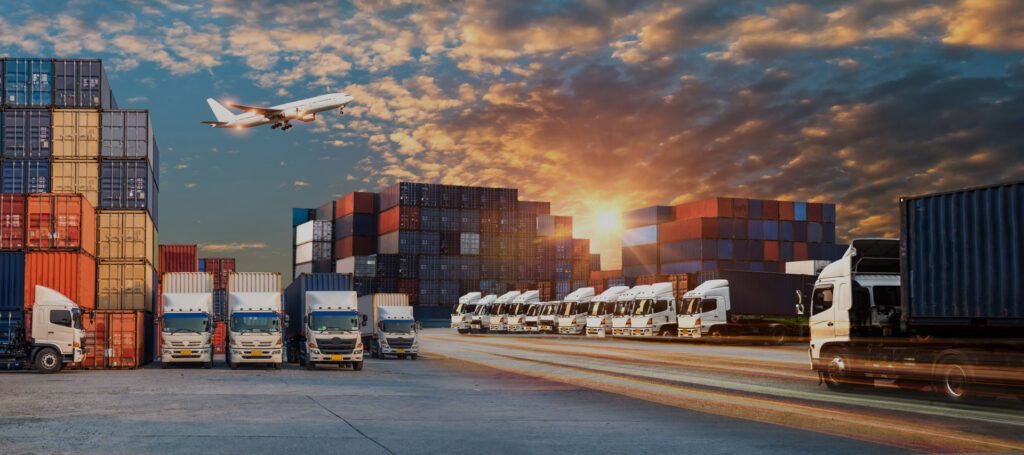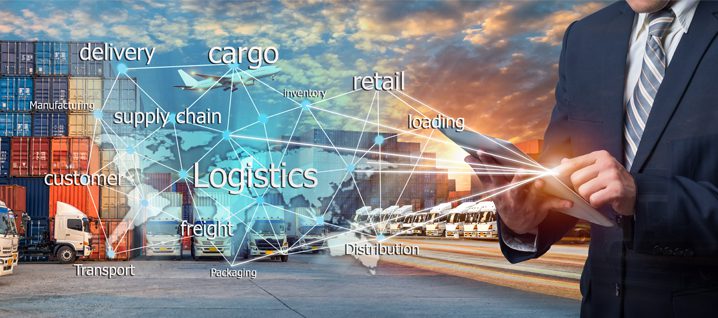What is Logistics?
Table of Contents
Logistics Definition
Logistics refers to the overall process of managing how resources are acquired, stored, and transported to their final destination. Logistics management involves identifying prospective distributors and suppliers and determining their effectiveness and accessibility. Logistics managers are referred to as logisticians. (Logistics Definition)
Logistics is generally the detailed organization and implementation of a complex operation. In a general business sense, logistics is the management of the flow of things between the point of origin and the point of consumption in order to meet requirements of customers or corporations. The resources managed in logistics can include physical items such as food, materials, animals, equipment, and liquids; as well as intangible items, such as time and information. The logistics of physical items usually involves the integration of information flow, materials handling, production, packaging, inventory, transportation, warehousing, and often security.
“Logistics” was initially a military-based term used in reference to how military personnel obtained, stored, and moved equipment and supplies. The term is now used widely in the business sector, particularly by companies in the manufacturing sectors, to refer to how resources are handled and moved along the supply chain
Logistics management is the part of supply chain management that plans, implements, and controls the efficient, effective forward, and reverse flow and storage of goods, services, and related information between the point of origin and the point of consumption in order to meet customer’s requirements. The complexity of logistics can be modeled, analyzed, visualized, and optimized by dedicated simulation software. The minimization of the use of resources is a common motivation in all logistics fields. A professional working in the field of logistics management is called a logistician.

Logistics Definition Logistics Definition
Role of Logistics
Above we have discussed the Logistics Definition, Lets us now have a look at how logistics works. It is important to recognize the importance of a dynamic balance between the minute details and the main elements involved in a product. The Role of Logistics is to maintain that balance. Once the firm realizes the importance of logistics it is necessary that the firm make full and efficient use of logistics. The first step is to create a buyer value for the customer and a strategic value for the firm.
The customer is the most important asset for a company. He drives the entire supply chain including manufacturing, marketing and logistics. Hence it is important for a firm to have a clear understanding of what the customer demands and to keep up to the customers expectations. Once a company has a clear understanding of its customer’s requirements it must device a strategy on how to use logistics to achieve it. This means that the company has to have a clear understanding or assessment of company’s strategic direction.
Now lets take a look at the various steps involved in a logistics strategy development and planning process.
Visioning: this includes the systematic development of an organizational consensus regarding the key inputs to the logistics planning process as well as identification of the potential alternative logistics approaches. This is an important step for the following reasons:
- Helps to define a strategic direction to the company and also to get a clear understanding the role of logistics in it.
- Get a clear idea of the requirements of the various segments of customers.
- Have a look at the various factors that would affect the strategy of the company.
- Define alternative strategies and also the scope of the planning effort.
Strategic analysis: this involves taking a look at the various components involved in the process and selecting the best logistics process among the alternatives. These components, which are to be reviewed, are revealed during he first step. This may include revamping the entire process to assessing how a single component can be used more effectively.
Planning: this involves the assembling of a plan that outlines the mission and goals for the logistics function and the programs and activities to achieve these goals. Logistics planning is an iterative process. The plans have to be redefined every year to improve the quality of performance.
Managing change: this involves effective management to implement enhanced ways of conducting business. The management should keeping changing the plans in accordance with the change in the market and also coach the organization to effectively embrace this change.

- Automation In Supply Chain Management, Logistics And Road Transport – The Benefits 2020
- Eco-Friendly Transportation – Reducing Carbon Emission In Logistics Industry
- What is Logistics and Supply chain Management and it’s Ultimate Concept, 2020
- 6 Effective Ways To Beat Logistics Companies And Transportation Competition.
- Effective Logistics Management- 6 Important Tips
Logistics Definition Logistics Definition
The Five Elements of Logistics
The role of each element of logistics often defines the logistics activities within a supply chain.
The problem with definitions and discussions of supply chains is that it is not easy to recognise the role of logistics within them, which is why the supply chain river is a simple way to relate the role of logistics within a supply chain.
The elements of logistics further help to explain what logistics activities and processes are being undertaken in a supply chain.
There are five elements of logistics
Storage, warehousing and materials handling
It is to enable a steady stream of products to be supplied by manufacturers. Why is this important? Manufacturers need to operate at peak efficiency, but consumers tend not to demand goods at the same rate as a manufacturer supplies them.
There tends to be an imbalance between supply, which is steady, and demand, which can be unpredictable. The answer is to store the surplus goods produced by a manufacturer until they are demanded by consumers. To achieve this, warehouse buildings are required. These need specialist storage equipment such as shelving or racks and material handling equipment to move them around the warehouse and to load and unload delivery vehicles.
Packaging and unitisation
A key definition and one of the Rs of logistics is the care and condition of a product. Packaging is an essential part of that. Unitisation is also important as this assists storage and transportation. The easiest product to move and store is a cube, so packaging and unitisation attempts to take all different sizes and shapes of product and pack them as near as possible into a cuboid shape.
Inventory
Inventory is a logistics element that is closely related to storage and warehousing. It is concerned with what stock to hold, where the stock is located and how much stock to hold. In effect, inventory is controlling the flows of goods going into and out of a warehouse. How is this achieved? By looking at sales data of past orders and using various mathematical and statistical tools to attempt to predict how much goods will be demanded by consumers. Inventory management is not an exact science, but depending on how variable demand can be, it is a useful tool to help manage the flows of goods through the supply chain.
The dictionary defines logistics as the detailed coordination of a complex operation involving many people, facilities, or supplies. Although this definition is true, logistics has taken on a new meaning in today’s digital world. Logistics can alternatively be explained as the detailed coordination of information, physical, and financial flows to and from trading partners and consumers. Each contains their own set of supporting activities and personnel to carry out those activities, but one cannot function without the other.
Inventory management is certainly a function of logistics but the influencers impacting inventory extend beyond the logistics network. Inventory requires a capital investment to build and stock finished goods. However, inventory is essential as the time a consumer is willing to wait for a product may be much less than the time it takes to manufacture the product and then ship the product to the customer need location. Inventory management considers a number of complex variables including; risk, lead time, cost, location, transport, and service levels.
Transport
A major element of logistics that most will recognise is transport. This includes all modes of transport including road vehicles, freight trains, cargo shipping and air transport. Without transport, goods would be unable to move from one stage to another within a supply chain. Some goods with short supply chains, such as foods, do not travel far. Other more complex products consist of many components that can be transported from all over the world.
Information and control
The element of information and control is needed by all the elements to act as triggers to various operational procedures. We have mentioned the information needed for inventory. Order levels help decide what orders need to be picked and packed in warehouses and enable the planning and organisation of transport. Information and control’s role is to help design information systems that can control operational procedures. They are also key in the forecasting of demand and inventory as already mentioned.
Blog- Logistics Definition & It’s Essential Role.
Powered By 360Presence
Leave a Replay
Logistics Definition Logistics Definition Logistics Definition Logistics Definition Logistics Definition Logistics Definition Logistics Definition




